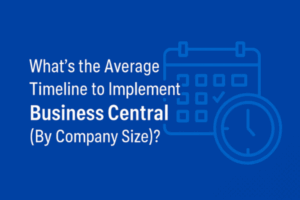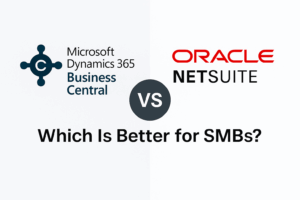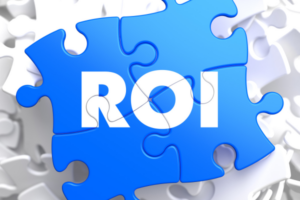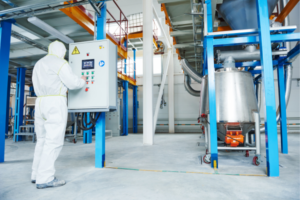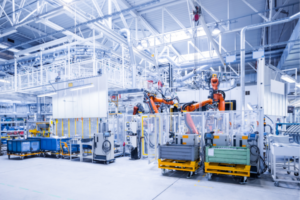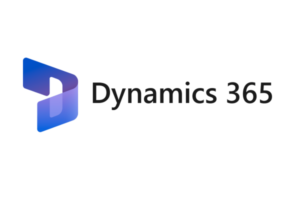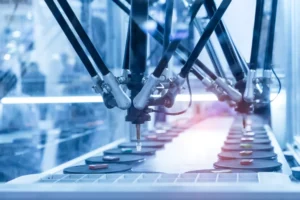What Is the ROI of Chemical Manufacturing ERP?
Return on investment (ROI) is a simple formula:
(Gain from ERP – Cost of ERP) / Cost of ERP = ROI
But in chemical manufacturing, the gains can span multiple departments from faster production scheduling to reduced compliance risk. Understanding the ROI of chemical manufacturing ERP means looking beyond just dollars saved. It also includes:
- Time saved on manual tasks and data entry
- Fewer compliance errors or audit penalties
- Reduced material waste from expired inventory
- More consistent quality control and fewer failed batches
- Improved customer satisfaction from accurate and timely orders
Key Areas to Measure the ROI of Chemical Manufacturing ERP
Compliance and Risk Reduction
Chemical manufacturers operate in one of the most regulated industries. ERP systems help you track documentation, manage SDS records, print GHS-compliant labels, and generate audit trails. These capabilities reduce the risk of fines, shutdowns, or lost certifications each of which can be costly.
Inventory Management and Waste Reduction
With real-time inventory tracking, lot traceability, and FEFO logic, ERP helps minimize material waste and avoid stockouts or overstock. These savings alone can significantly boost the ROI of chemical manufacturing ERP.
Labor Efficiency and Process Automation
How much time is your team spending on data entry, batch reconciliation, or locating paperwork? ERP automates these processes so your staff can focus on higher-value work. Over a year, the labor savings alone can be substantial.
Production Planning and Downtime Prevention
By syncing production plans with inventory levels and scheduling data, ERP reduces downtime and improves throughput. Even small improvements in uptime can lead to thousands in recovered revenue.
How to Build a Simple ROI Model
Start by listing all the costs:
- Licensing or subscription fees
- Implementation and training
- Support and maintenance
- Hardware (if on-premise)
Next, estimate the gains:
- % reduction in material waste
- % reduction in manual labor hours
- % increase in on-time shipments
- % decrease in quality issues or rework
Use historical data where possible. Then plug into the formula to estimate the ROI of chemical manufacturing ERP over 1 to 5 years.
Example: A manufacturer spends $150,000 on ERP. Over the next 2 years, they save $200,000 in labor, $50,000 in inventory waste, and avoid $25,000 in compliance costs. Their ROI is:
($275,000 – $150,000) / $150,000 = 83%
Mistakes to Avoid When Calculating ERP ROI
- Only measuring direct financial savings
- Ignoring compliance and risk mitigation benefits
- Failing to factor in long-term improvements like scalability
- Overestimating short-term gains while underestimating implementation costs
The ROI of chemical manufacturing ERP should be holistic. Think in terms of efficiency, visibility, agility, and long-term strategic value.
How to Maximize the ROI of Chemical Manufacturing ERP
Choosing the right ERP system is only the beginning. To fully realize the ROI of chemical manufacturing ERP, you need to take intentional steps throughout and after implementation.
- Choose an ERP that’s built for chemical manufacturing, not a generic platform
Generic systems often lack the built-in functionality needed for compliance, traceability, and batch production. Selecting a platform designed specifically for chemical manufacturing reduces customization costs and shortens your time to value. - Work with a partner who understands batch processing and compliance
An implementation partner with deep industry expertise will help you configure your ERP system to align with your workflows. They’ll also anticipate challenges related to hazardous materials, multi-step production, and evolving regulations boosting ROI from day one. - Invest in user training and adoption
A feature-rich ERP system won’t drive value if your team doesn’t use it. Focus on comprehensive training that empowers users to apply the system effectively in their day-to-day work. The better your adoption, the more measurable value you’ll see. - Continually monitor KPIs post-implementation and optimize as you grow
ERP is not a one-and-done project. Monitor key performance indicators like inventory turnover, waste levels, and order accuracy. Use those insights to fine-tune workflows and expand ERP capabilities over time, increasing the long-term ROI of chemical manufacturing ERP.
Think Long-Term, Act Strategically
When done right, ERP is one of the best investments a chemical manufacturer can make. It improves compliance, reduces costs, and helps you operate with more precision and agility.
Calculating and maximizing the ROI of chemical manufacturing ERP helps you make a smarter investment upfront and sets your business up for sustainable success.
📌 Related Reading: How Much Does a Chemical Manufacturing ERP Cost?



